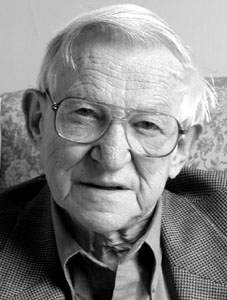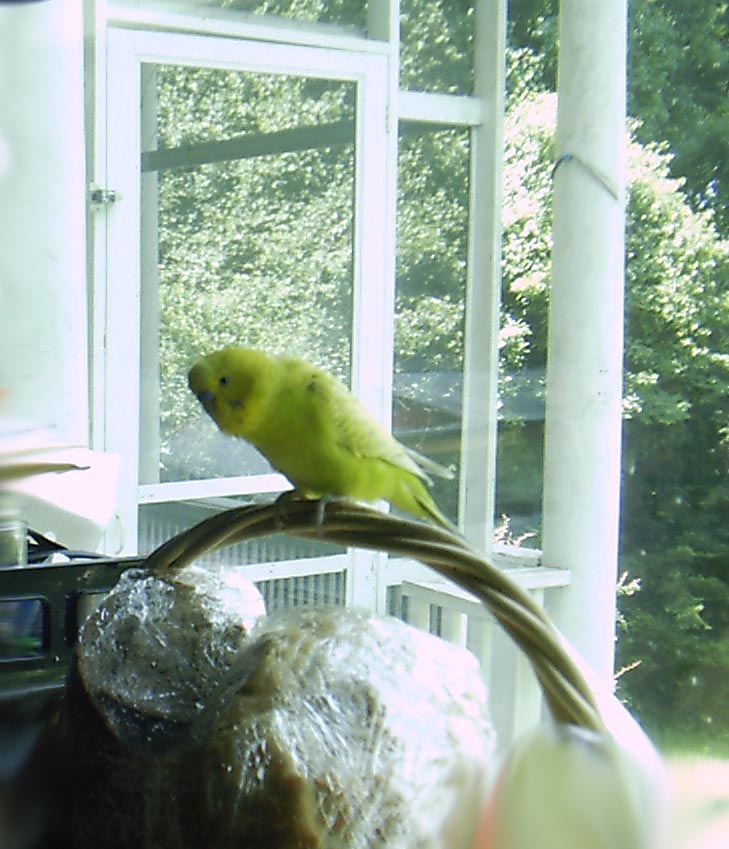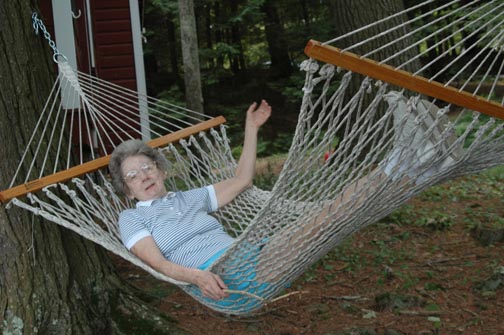Newsletter #96
June 29, 2007
Let me begin with two happy items of personal news: My article “How To Get a Novel Started” has just come out in the July issue of THE WRITER (Volume 120, Number 7). THE WRITER has been around a long time, and if you read a couple of their issues, you can quickly pick up a sense of the general vocabulary related to writing. They also pay their contributors, no small thing in this present publishing atmosphere. My second news is that my most recent children’s novel, BILLIE OF FISH HOUSE LANE, has been chosen as the Two Towns One Children’s Book Read in Maplewood and South Orange, New Jersey.
I’ve been thinking a lot lately about how so many people write, and why they keep writing, usually with no promise of financial recompense. One of my theories is that we are talking back to the books that have moved us. In my own case, I think sometimes I write because I developed the habit when I was about seven and have always had enough personal satisfaction from it to keep going, however badly fame, glory, and financial gain were progressing. Please email me with your thoughts on the subject.

This Newsletter takes a look at writing and reading in our schools. First, I have some notes from fifth grade teacher Matthew Young about the redoubtable Lucy Calkins and her method of teaching writing, used in many classrooms around the country. Matthew talks about why it works for him. Calkins, Matthew explains, has broken down the steps of writing to make it less of a mystery and more of a teachable subject, so even if you like to think in terms of inspiration and the Muse, it is still of interest, in my humble opinion, how we can in a practical way, make strong writers of our students.
Next comes a transcript of an email discussion started by Phyllis Moore and enriched by several of her regular correspondents on the so-called “issue” fiction for young adults: how rough does reading for young people get these days? Finally, this issue ends with recommendations for your reading and announcements.
MATTHEW YOUNG ON THE WRITING PROCESS
Matthew Young, a 5th Grade Teacher in Ossining, New York, used to teach 4th grade at P.S. 75 in New York City, the school where Phillip Lopate led a team of us back in the nineteen-seventies in working with kids on writing and making movies and even comix. Matthew praises Calkins for making writing and the teaching of writing work better for thousands of teachers and children.
“One give-away that Calkin’s writing process is going on [in a classroom],” says Matthew, “is the presence of Writer’s Notebooks. Also, charts or other prominent displays helping students keep track of where they are in the process, e.g., drafting, conferring, revising, publishing, etc. Then look for chart paper hanging from clotheslines with shared writing pieces or other examples of writing strategies written in the teacher’s hand, plainly visible for all to see. Look for ‘Mentor Texts.’ Writing centers and places for students to confer with each other are not uncommon. Students may be actively engaged in conferences with the teacher and with each other. Some may be writing in ‘writing nooks,’ places in the classroom that are not their desks. Further, teachers who do this are generally very happy to talk about it and will volunteer the information when asked (and sometimes when not asked).
“At conferences I’ve heard from Lucy and from her colleagues that the Process, ,which is in a continual state of revision, derives from careful consultation with professional writers about how they do what they do. The ‘writer’s notebook’ is a very useful tool for gathering and developing ideas for writing (fiction, non-fiction, drama, or poetry). Naturally, many professional writers do not use an actual notebook, but most do have a way of recording and keeping track of ideas as they occur (e.g., a laptop computer, or scraps of paper in pockets that then go into a file at the end of the week). But for kids, an actual notebook is very useful and manageable. Furthermore, most professional writers likely do not keep a chart in their home offices with a clothespin to indicate which stage of the process they are in—obviously, mature writers are constantly in flux between drafting, revising, conferring, in no particular order and often simultaneously. One goal of the Writing Process is to help children understand this. But most children will not do this naturally, and need explicit instruction on how it is done.
“Another goal of the Process is to cultivate an understanding and appreciation of structure. For example, non-narrative writing can also be described as ‘idea-based’ writing; that is, a non-narrative piece (article, essay) is organized by idea: controlling ideas and subordinate ideas. Narrative writing (memoir, fiction) is controlled by time (a story moves through time, and there is a focus on “traditional European story structure”). Students read and write literature through those lenses.
“The most powerful teaching technique I have used from Calkins and her colleagues happens during revision. You write your piece, and then take a particular writing strategy for consideration. Some writing strategies include dialogue, sensory details, setting details, metaphoric language, flashback, flash-forward, foreshadowing, and so on (you have to admire the rigor). So, let’s say for the sake of argument I want my students to learn how to use setting details in their writing. Mini-lessons and mentor-text studies will ensue during which we study setting details. We read for them, we conduct guided reading groups on them, we notice them in our read-alouds. Meanwhile, in Writing Workshop, as you re-read your piece, you look for opportunities to insert setting details. You mark up your draft with them (professionals do this, no?). Then, for your next draft, you work them in. Then do the same with another strategy.
“As we get older we are able to hold and work with many strategies in our heads at once. With early- and middle-childhood students, we teach strategies discretely, adding tools to their tool boxes. This methodology has been successful for my students because...
...it’s highly engaging;
...it’s rigorous;
...it’s manageable for the children;
...it builds their independence (‘Teach the writer, not the writing;’ ‘give a man a fish...’)
...it’s at heart a flexible framework that can accommodate a visiting artist, and his or her vision of writing, quite well.”
PHYLLIS MOORE STARTS A DISCUSSION ABOUT YOUNG ADULT ISSUE NOVELS
Phyllis writes: “For several years I've been a judge for Letters About Literature, a West Virginia Library Commission contest for WV students. The students read any book/s they choose and write letters to authors about how a work impacted their life. Up till last year, I'd often read the books: LORD OF THE FLIES, OF MICE AND MEN, HEART OF DARKNESS, MISSING MAY, THE DEVILS ARITHMETIC, etc.
“Now the titles are less familiar to me but the letters are just as compelling. Intrigued by the letters, after the contest ends, I spend some time reading the ‘new to me’ books. The topics are so 2007: high school kids planning when to lose their virginity and to whom, rapes occurring in school and at other places, sexual abuse by parents and others, anorexia, cutting, drug and alcohol abuse, fractured families, bullying, poverty, teens ‘coming out,’ gay sex, AIDS, ‘pharming,’ etc. One of the letters this year was to Gail Giles, the author of SHATTERING GLASS. In the novel a senior named Simon Glass is beaten to death by classmates in a room at the high school.”
Carol Del Col responded : “The list of topics...is chilling. Signs of the times, indeed, but just exactly what kind of signs is not clear to me. I really have no answers, only questions. Are these books reflecting the  reality of 21st-century American adolescents? Or are they exploiting the headlines to provide the kind of sensationalism teens often crave? Do they contribute to a growing desensitization of our young people to violence? Or do they teach our young people compassion for those who suffer or are different? Are the books the result of a tendency to eschew escapism in literature? Or are they instead a form of escapism, a way to take teens out of what they perceive as their boring, sane lives in which nothing headline-producing ever happens?
reality of 21st-century American adolescents? Or are they exploiting the headlines to provide the kind of sensationalism teens often crave? Do they contribute to a growing desensitization of our young people to violence? Or do they teach our young people compassion for those who suffer or are different? Are the books the result of a tendency to eschew escapism in literature? Or are they instead a form of escapism, a way to take teens out of what they perceive as their boring, sane lives in which nothing headline-producing ever happens?
“I'd like to think the books are exploitative rather than a reflection of reality; it is simply too dreadful to think that American adolescents are inhabiting--or even perceive themselves as inhabiting--such a reality. But here's another interesting question to consider: the classic literature traditionally read by high school students includes ROMEO AND JULIET (teen suicide), JULIUS CAESAR and MACBETH (betrayal, murder, violence), HEART OF DARKNESS (primal evil), OLIVER TWIST (cruelty to and exploitation of children), etc., etc. I believe there is a difference between these themes and the topics of the adolescent literature you describe, but can we articulate this difference? As I said, questions, no answers. But I must tell you I long for the days of Nancy Drew and Trixie Belden! Innocence lost, indeed.”
To which Phyllis replied: “Yes, the books of the past cover some of the same topics. A SEPARATE PEACE and the death of a young boy, BRIDGE TO TERABITHIA and the death of a young girl, GOODBYE, CHICKEN LITTLE and a drunken uncle. Somehow it seem today's Y. A. books are more in-depth-nasty. Having taught in a high school, I know kids face all these nasty situations and sexual issues. I do think they speak to the issues that are of concern to them and I do think the present generation's life is more difficult than mine was.”
Phyllis went on to say: “In 1994, I did a voluntary program of my own invention, dubbed ‘Read to Win,’ in a local technical school serving high school students from three WV counties. Two of the counties are quite rural. For the contest, the students chose something to read from a specified genre each week. They wrote comments about what they read and turned their work in for a chance to select prizes such as a fishing pool and reel, makeup kits, basketball, game, calculator, etc. The weekly winners were photographed and featured in a news article in the local paper. The program ran for six weeks and over 600 reports were turned in By and large the kids chose to read ‘issues’ fiction. The most popular topics were pregnancy while in high school, drunken relatives, sexual situations, grandparents in nursing homes, and divorced families. For the contest, I had books and magazines available by Appalachian authors with a heavy emphasis on WV authors but students could choose any books or topics. The favorite novel was GOOD-BYE CHICKEN LITTLE by Betsy Byars. It has an Elkins-like setting and features a low income family. The father was killed in the mines, the mother didn't know how to drive, a favorite alcoholic Uncle accepts a dangerous dare (to walk on an icy river) and ends up dead, and a grandparent is placed in a nursing home. In poetry the students really liked the poems about low-income kids or abused kids. A favorite poem featured a girl having a baby on the school bus.”
Other comments: June Berkley wrote, “This is disconcerting, to say the least. ....The trend is sad. I can recall when Judy Bloom (with whom I participated in a censorship film, by the way, in Atlanta under ALA sponsorship ….) had such a shocking effect by even approaching a sexual theme on the more obvious level, nothing explicit or sordid, just real….What have we come to! “
Brenda Seabrook said, “I think this trend in YA lit started with Robert Cormier's last book & has continued. There is probably still room for books that don't go into all those problems but the genre became more elastic to encompass the reality of life.”
And Carol De Col added, “Yes, I think the current trend in adolescent literature did begin in the 1970's, and Cormier may well have been one who led the way. I had heard of his books--they came out about the time I was taking some post-graduate work in curriculum and instruction. There was controversy even then about the teenage ‘problem’ novel. Cormier's work probably looks pretty tame today.”
AND SOME RECOMMENDATIONS FOR YOUR (ADULT!) READING PLEASURE
Ardian Gill wrote to say: “I just finished two depressing and brilliant books: Cormac McCarthy's THE ROAD, and JM Coetzee's THE LIFE OF MICHAEL K. Both deal with a journey in a difficult place, McCarthy in an imagined landscape of a devastated, ash covered planet, a man and his son trying to survive and to reach a place where they can live, though they have no information that such exists. The purpose is in the journey itself. The language is spare and poetic, often the poetry of repetition Similarly, MICHAEL K deals with a wanderer in apartheid South Africa, also trying to find a safe haven in a hostile environment. And, too, both have a parent/child relationship, at the heart of it in McCarthy's case, though the protector and protected roles are reversed. Coetzee's language is lean and also poetic, and he introduces a first person narrator in the middle of the book, returning to third person for the final act. Both books end sadly with yet a note of hope.”
Eva Kollisch said, “I read something that everybody else has probably read
years ago, BEL CANTO, by Ann Patchett, a lovely, musical, subtly radical book. I also read something, having been put to shame by my grandson, which everybody else probably read when they were in high school--TO KILL A MOCKINGBIRD.– a fine, courageous, sweet story.”
GOOD NEWS!! GOOD BOOKS!!
Kevin Stewart’s new book, THE WAY THINGS ALWAYS HAPPEN HERE is just out from WVU PRESS:
READ IT ONLINE!

 reality of 21st-century American adolescents? Or are they exploiting the headlines to provide the kind of sensationalism teens often crave? Do they contribute to a growing desensitization of our young people to violence? Or do they teach our young people compassion for those who suffer or are different? Are the books the result of a tendency to eschew escapism in literature? Or are they instead a form of escapism, a way to take teens out of what they perceive as their boring, sane lives in which nothing headline-producing ever happens?
reality of 21st-century American adolescents? Or are they exploiting the headlines to provide the kind of sensationalism teens often crave? Do they contribute to a growing desensitization of our young people to violence? Or do they teach our young people compassion for those who suffer or are different? Are the books the result of a tendency to eschew escapism in literature? Or are they instead a form of escapism, a way to take teens out of what they perceive as their boring, sane lives in which nothing headline-producing ever happens? smudged and ominous. Or is the ominous only how I feel about the coming discomfort. Well, we apparently have some more of the nice weather coming next week– it’s a typical sequence here in the great Northeast, miserably greasy greenish yellow days followed by the ones that are as brilliant as jewels, usually with some thunder storms to mark the changeover.
smudged and ominous. Or is the ominous only how I feel about the coming discomfort. Well, we apparently have some more of the nice weather coming next week– it’s a typical sequence here in the great Northeast, miserably greasy greenish yellow days followed by the ones that are as brilliant as jewels, usually with some thunder storms to mark the changeover. ivate manuscripts. Tonight is the last writers’ peer group. It’s been cool and gray, so at least we’re not all staying awake and sweating. A good time, rich with people doing things people do– for the moment everyone alive and in fair health. Why aren’t we just calm and thankful instead of excited and greedy for more?
ivate manuscripts. Tonight is the last writers’ peer group. It’s been cool and gray, so at least we’re not all staying awake and sweating. A good time, rich with people doing things people do– for the moment everyone alive and in fair health. Why aren’t we just calm and thankful instead of excited and greedy for more?